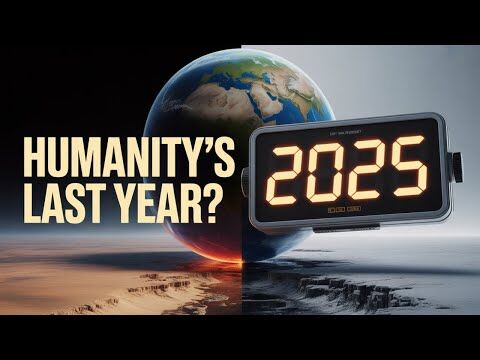We gathered at Billy Graham’s alma mater over three days to explore his ministry’s place in American history and chronicle its meaning for the future. It was a fascinating conversation, and poignant, too, as Graham struggles with poor health at home in Montreat, N.C., far from the limelight he once commanded.
But as scholars and admirers here in suburban Chicago added to the growing conversation on Graham’s legacy, a question hovers: How many people younger than, say, 60 are listening?
As Duke Divinity School’s Grant Wacker told the Wheaton College gathering dominated by graying heads, during a recent lecture at Trinity College just one student knew the name Billy Graham. And that student thought Billy Graham was a professional wrestler.
“His story,” Wacker said, speaking of modern Christendom’s most famous figure, “is rapidly receding into the mists of history.”
Graham, who turns 95 on Nov. 7, is under round-the-clock care at home, with limited vision, hearing and mobility. The Charlotte, N.C.-based ministry that’s now run by his son, Franklin, does its best to keep the aging evangelist in the forefront: His picture is on the home page of the website, and Thomas Nelson is due to release Graham’s 32nd book, “The Reason for My Hope: Salvation,” on Oct. 15.
But it’s been eight years since Graham’s last formal crusade. Those close to him say he is in good spirits but fragile health, and requires help in whatever ministry work he tackles. He no longer makes public appearances. As Wacker told the conference, his public ministry—the one that drew 210 million people to stadiums and arenas around the world—is effectively over.
It’s left, then, to gatherings like this one to gauge the impact and meaning of Graham’s command of the Christian stage for a half-century, and to mine the lessons for whatever form evangelism takes going forward.
The Sept. 26-28 conference was sponsored by Wheaton’s Institute for the Study of American Evangelicals, and featured a dozen scholars from around the country. Among the topics: Graham’s mastery of the media, his sermon style, and why he succeeded in commanding the world’s stage for five decades or more.
I spent a decade covering Graham for The Charlotte Observer, and so the scholars drafted me early in the process to offer a layman’s response to their analyses, and to write the last chapter in a book, tentatively called “Worlds of Billy Graham,” which will examine the future of his ministry under his more politically outspoken (and conservative) son.
Michael Hamilton of Seattle Pacific University spoke of the power of Graham’s crusade sermons arising from a blend of pageantry, as well as his credibility and a simple message that never changed: Accept Jesus and know a new life, now and forever. “Graham,” he said, “aimed for the heart and not the head.”
Estimates are that 4 percent of his crusade audiences over the years answered the famed altar call and committed (or recommitted) their lives to Christ.
Elesha Coffman of the University of Dubuque Theological Seminary analyzed Graham’s mastery of mass media. Graham, she said, toed that fine line between slick and savvy in winning positive press. He also learned how to take advantage of movies, radio, magazines, even appearances on “The Tonight Show.” His TV interview with Woody Allen can still be found on YouTube, evidence of Graham’s ability to evangelize on pretty much any platform.
Wacker has been working for years on his own Graham book, “Billy Graham and the Shaping of Modern America,” and mused about the qualities he believes pushed Graham into the spotlight and kept him there. Among them: his basic decency and unstained ministry; a willingness to apologize and adapt (such as his oft-repeated confession that he got too close to politicians and presidents), and the bottom-line promise he offered the faithful—the chance to come forward and start over.
“No matter how badly you have messed up,” Wacker said, echoing a lifetime of Graham messages, “there’s a second chance.”
Looking back on Graham’s history was compelling, but it comes with the sober realization that a common knowledge of his ministry is fading with time. Most of the lectures drew 75 people or fewer, some of them longtime friends of the Graham ministry, many of them well over 60. Only a handful of the 2,400 undergrads at Wheaton dropped by to learn more about the college’s most famous graduate, Class of 1943.
Even at this ardent Christian school, many students have only a vague knowledge of Graham. Freshman Hunter Dinkins, 18, of Visalia, Calif., said that God brought him to Wheaton. But as he waited for a history class outside the conference hall, he confessed that all he knows about God’s most famous modern ambassador is that he held big crusades. “Other than that …”
The statistic that Wacker shared at the start of the conference looms large: A 2007 Gallup poll found that 30 percent of Americans under 30 didn’t know who Billy Graham was, much less what he accomplished.
As scholars study Graham’s crusade tapes, write their books and give their lectures, they are hoping that the next generation of Christian leaders is listening, that someone out there in Christendom is learning something about integrity, vision and longevity.
“Billy Graham’s legacy? Courageously preaching the gospel,” said Wheaton graduate student Lance Hays, at 25 one of the youngest to attend the conference. “Years from now? Hopefully people will remember that he preached a message that never changes.”
(Ken Garfield is the former religion editor of The Charlotte Observer, where he covered Billy Graham for a decade. Garfield’s book, “Billy Graham: A Life In Pictures,” was recently published by Triumph Books in collaboration with The Observer.)











































